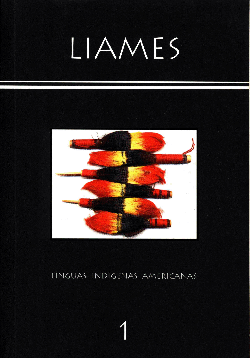Resumen
This work provides an analysis of inchoative, morphological and analytical causatives in Pima Bajo, an Uto-Aztecan language spoken in Northwest Mexico. It is argued that for the analysis of these constructions it is useful not only to pay attention to the structural morphosyntactic properties, but also to functional values like, spontaneous, direct or indirect causation. All these functional values expressed in the scale: analytical-morphological-lexical causatives, proposed by Comrie (198:333). Constructions obtained from verbs selecting object complements, show that they could also be explained by considering the same kind of functional values. The scale previously mentioned, it is also useful to explained the fact that Pima Bajo doesn´t allow double object causatives. The scale makes unnecessary the Principle of Argument Density proposed by Song (1996).Citas
COMRIE, Bernard. (1975). Causatives and universal grammar. Transactions of the Philological Society. 1974. 1-32.
COMRIE, Bernard. (1985). Causative verb formation and other verb deriving morphology. En Timothy Shopen, (ed.). Language Typology and Syntactic Description. Volume III.Grammatical Categories and the Lexicon. Cambridge: Cambridge University Press. 309-348.
COMRIE, Bernard y Maria POLINSKY (eds.). (1993). Causatives and Transitivity. Amsterdam/Philadelphia: John Benjamins Publishing Company.
GIVÓN, T. (1984). Syntax. A Functional-Typological Introduction, Vol. 1. Amsterdam/ Philadelphia: John Benjamins Publishing Company.
HASPELMATH, Martin. (1993). More on the typology of inchoative/causative verb alternations.Causatives and Transitivity. Bernard Comrie y Maria Polinsky (eds.).Amsterdam/Philadelphia: John Benjamins Publishing Company. 87-120.
HINRICHS, Erhard, Andreas KATHOL & Tsuneko NAKAZAWA, eds. (1998). Syntax and Semantics, Volume 30. Complex Predicates in Non-derivational Syntax. San Diego: Academic Press.
KOZINSKY, I. y Maria POLINSKY. (1993). Causee and patient in the causative of transtitive: Coding conflict or doubling of grammatical relations. Causatives and Transitivity. Bernard Comrie y Maria Polinsky (eds.). Amsterdam/Philadelphia: John Benjamins Publishing Company. 177-240.
SHIBATANI, M. (ed). (1976). Syntax and Semantics. The grammar of causative construction. Volume 6. New York: Academic Press.
SONG, Jae Jung. (1996). Causatives and Causation. A Universal Typological Perspective. Longman Linguistic Library.
WEBELHUTH, Gert. (1998). Causatives and the nature of argument structure. Syntax and Semantics, Volume 30. Complex Predicates in Nonderivational Syntax. San Diego: Academic Press. 369-422.
WIERZBICKA, Anna. (1988). The semantics of causative constructions in a cross.linguistic perspective. The Semantics of Grammar. 236-255.
LIAMES: Lenguas Indígenas Americanas utiliza la licencia de Creative Commons (CC), preservando así la integridad de los artículos en ambiente de acceso abierto.

